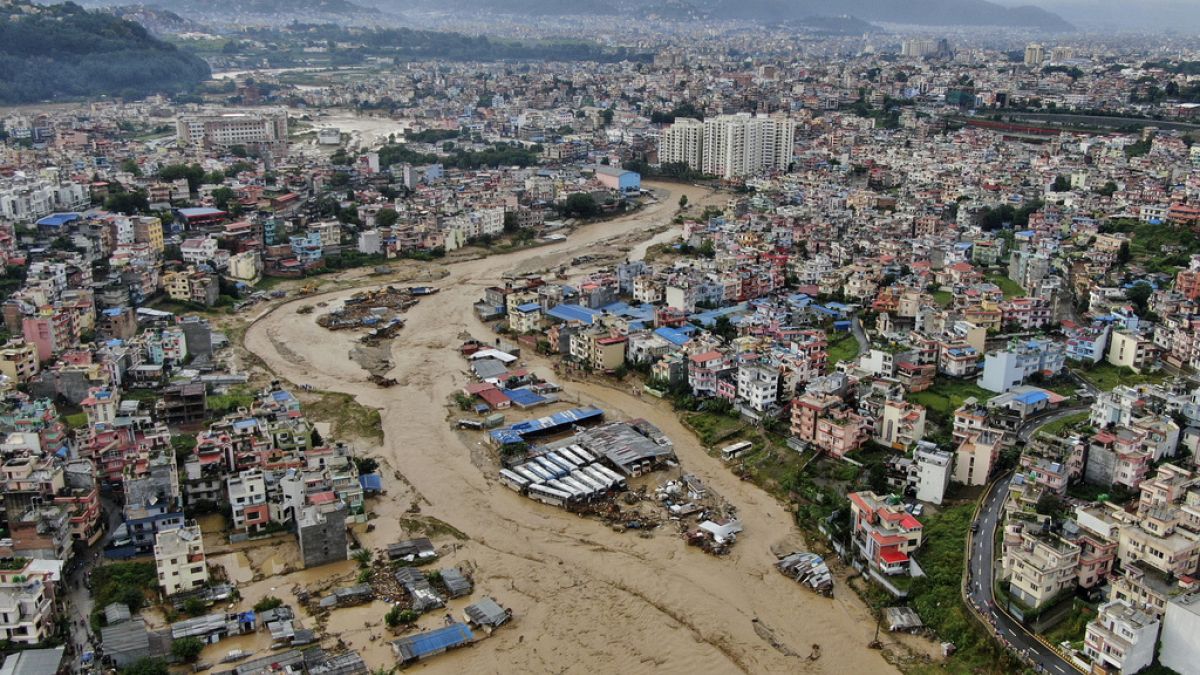The death toll in Nepal is rising due to floods and landslides in the more remote villages of the Himalayan state. Rescue workers recovered 14 bodies from two buses buried in a landslide near Kathmandu. At least 34 people were killed in the capital, which was the hardest hit by the flooding. However, by Sunday morning the weather had improved, aiding recovery efforts. Police officers and soldiers were assisting with rescue operations while heavy equipment was used to clear landslides blocking highways. Kathmandu was still cut off as three major highways remained closed due to landslides.
Residents in the southern part of Kathmandu were cleaning up their homes as water levels receded. The government announced the closure of schools and colleges across Nepal for the next three days. Heavy rains started on Friday and were expected to continue throughout the weekend. Flood warnings were issued across the country, leading to bans on night-time travel on highways and discouraging car travel. The monsoon season typically lasts from June to mid-September.
The situation remains dire in Nepal as the death toll continues to rise due to floods and landslides in remote villages of the Himalayan state. Rescue workers managed to recover 14 bodies from two buses buried in a landslide near Kathmandu. The capital was hit the hardest, with at least 34 people losing their lives in the floods. Recovery efforts were hindered by blocked highways, with Kathmandu still cut off from the rest of the country. Despite the improved weather on Sunday, heavy rains continued, prompting the government to issue flood warnings across Nepal.
As the water levels began to recede in the southern part of Kathmandu, residents were left to clean up their homes and assess the damage. The government responded by closing schools and colleges for the next three days, in light of the ongoing weather conditions. The monsoon season started in June and is expected to last until mid-September, with continued heavy rainfall forecasted over the weekend. Night-time travel on highways was banned, and people were advised against driving cars as a precautionary measure.
The devastating impact of the floods and landslides in Nepal has claimed numerous lives, with the death toll expected to rise as rescue efforts continue in the more remote villages. The recovery of 14 bodies from buried buses near Kathmandu highlights the widespread destruction caused by the flooding. The capital city, Kathmandu, has been heavily affected, with at least 34 casualties reported. Despite the improved weather on Sunday, recovery operations were impeded by blocked highways, preventing access to and from the city.
Residents in the flooded areas of Kathmandu were left to clean up their homes as the waters began to recede, while the government announced the closure of schools and colleges across the country for the next three days. The ongoing heavy rains, which began on Friday, are expected to persist over the weekend, with flood warnings issued nationwide. Night-time travel on highways has been prohibited, and people were urged to avoid driving cars to ensure their safety. The monsoon season, which typically lasts from June to mid-September, has brought unprecedented rainfall and devastation to Nepal.
In conclusion, Nepal is facing a humanitarian crisis as the death toll rises due to floods and landslides in the Himalayan state. The recovery efforts have been hampered by blocked highways, leaving Kathmandu isolated from the rest of the country. The government has taken measures to assist residents in flooded areas, including the closure of schools and colleges. Despite the improved weather, heavy rains are expected to continue, prolonging the challenges faced by the affected communities. As the monsoon season persists, it is essential for authorities to prioritize rescue operations and provide support to those impacted by the natural disaster.











